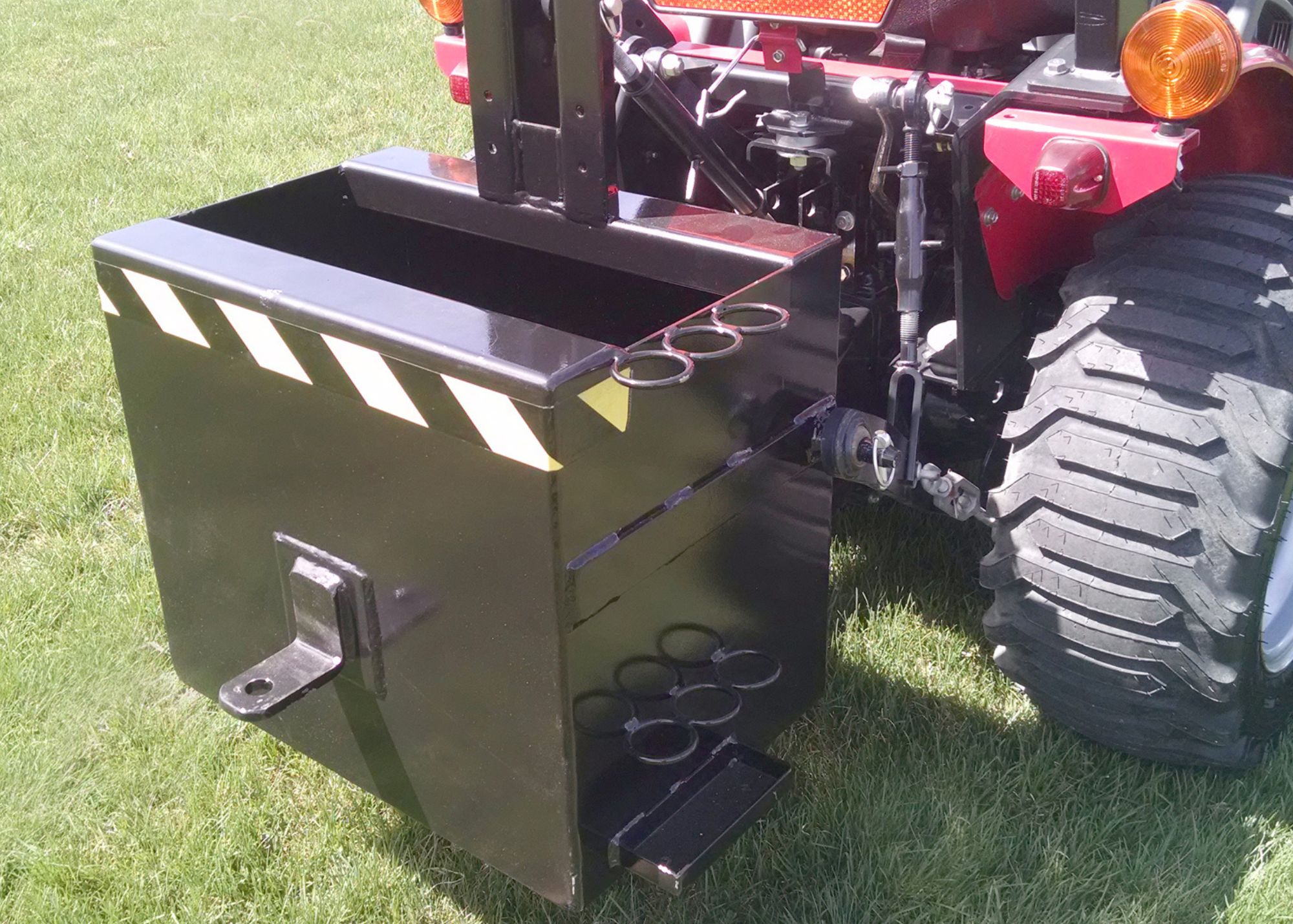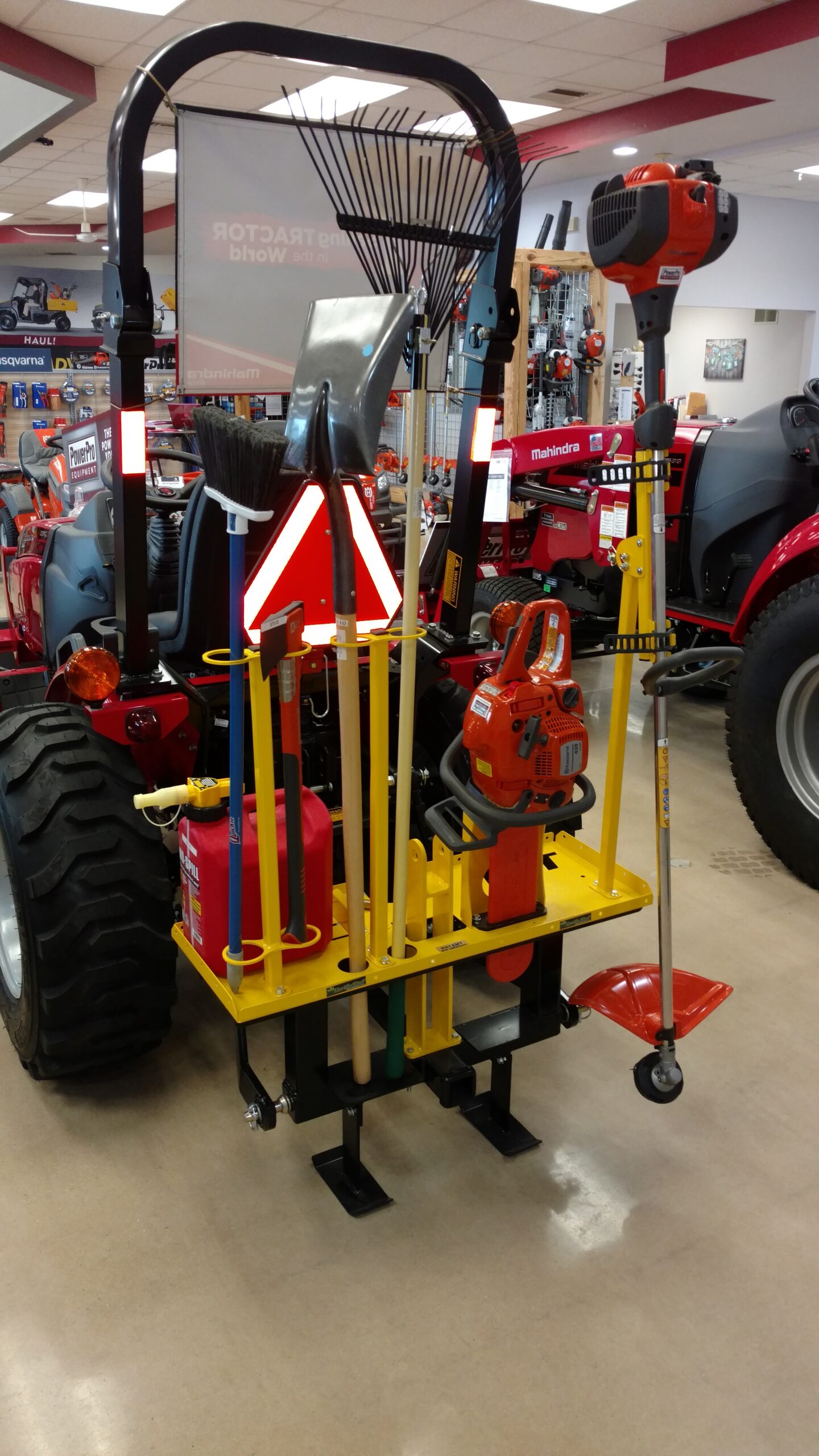Pallet Forks Understanding Capacity
Many customers ask how much they can lift when using pallet forks on a compact tractor. We understand many of the users of compact tractors are new to using the tractor with specific attachments, in particular pallet forks.
I will try and help you understand keeping it as simple as I can. Pallet forks do change your operating load capacity simply because they move your load center further out from the loader pins where the bucket or forks attach to the tractor.
Growing up a simple exercise was to hold a heavy book in your hand close to your body. Close in no problem holding the book up but the further you moved the book away from your body the harder it was to hold it up until your arm was fully stretched out and then wow, I can hardly hold the book for more than a few seconds. Tractors with loaders work much in the same manner. There are manufacturer’s load capacity ratings for every type of loader on the market.
Let’s start by looking at the loader with a bucket and the load capacity rating is 1,000 Pounds. This weight is considered the safe operating load capacity. If the manufacturer says the load capacity rating is at the hinge pin, then that would be right behind the bucket where the loader attaches to the bucket. If your bucket has a 16″ long floor, then the load center would be roughly 1/2 of that or 8″ so now you have already moved your load center out 8″ from the loader pinpoint effectively reducing the lifting capacity by those 8″. Your loader may do fine and lift the 1,000 pounds as long as you are on a relatively flat surface. The only issue would occur if you were on a slight grade with a fully loaded bucket then as you lift the loader arms you may experience the upside wheel starting to come off the ground, if so, immediately drop the load. The loader lift capacity is measured with the loader at it furthest out position which in most case would be straight out from the top of the hood of the tractor. That is why it seems fine with the load down but gets a little dicey when you raise the load. Always be cautious when using a tractor or tractor loader.
Now let’s get on to the Pallet forks. Remember we said with the bucket with a 16″ floor your load center was 8″ or 1/2 the distance forward well forks work the same way. If you were to use a set of 34″ long forks the load center would now be 17″ forward or 9″ further that the bucket. With a 36″ set of forks 18″ or 11″ further out, and the equations goes on with each inch you add to the length of the forks.
In simple terms the longer the fork the more operating load capacity you lose. One example from my history. I was in charge of a Skid Steer loader line for a major manufacturer, and they had a skid steer loader with a safe operating load capacity of 1,500 pounds this was using the standard bucket but when they put a set of 42″ long forks on the same loader, they dropped the safe operating load capacity to 975 pounds. I hope you are now getting the idea. Just because the manufacturer’s literature says you have 1,000 pounds of safe operating load capacity that does not mean you can lift 1,000 pounds with a set of forks that have 34″ or more tine length.
The main idea of this is to help you understand the capabilities of your loader tractor, what you can do and not do. One other note I have found with my compact tractor, and you may as well. that if I am trying to lift something that is within the manufacturer’s safe operating load, but it is in the back of a truck and I have some long forks on, the tractor will run out of hydraulic capacity to lift the load. In general Manufactures try make their tractor loaders and rate them to keep you safe. Do your best to operate them within the guidelines you are given and do not overload them.
Enjoy your tractor and stay safe!


